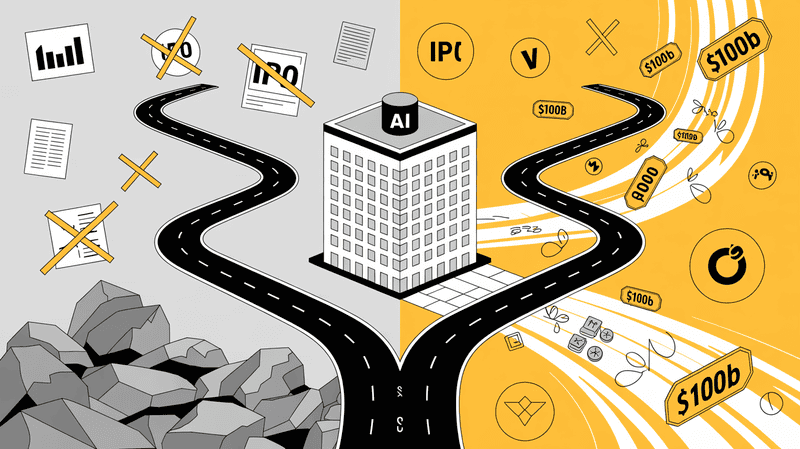The global AI race just took a dramatic turn. While America was busy announcing its own AI dominance plan, China quietly unveiled a strategy that could reshape how the world develops artificial intelligence. Just three days after Trump's AI Action Plan, Premier Li Qiang stood before tech leaders in Shanghai and proposed something completely different - a global AI cooperation organization that would challenge America's tech leadership.
But this isn't just another political announcement. China is backing up its words with real technology breakthroughs, billion-dollar investment plans, and partnerships that span across continents. From releasing AI models that compete directly with ChatGPT to attracting Silicon Valley legends like Geoffrey Hinton to Shanghai, China is proving it has both the vision and the capability to lead the AI future.
The most surprising part? Even America's own chip restrictions haven't slowed China down. In fact, they might have made Chinese AI companies stronger and more innovative than ever before.
Let's get into it.
China Announces Major AI Strategy at Shanghai Conference
China just made a big move in the global AI race. The country revealed its plan for AI cooperation during a major technology event in Shanghai. This announcement came just three days after America unveiled its own AI strategy.
China's Global AI Plan
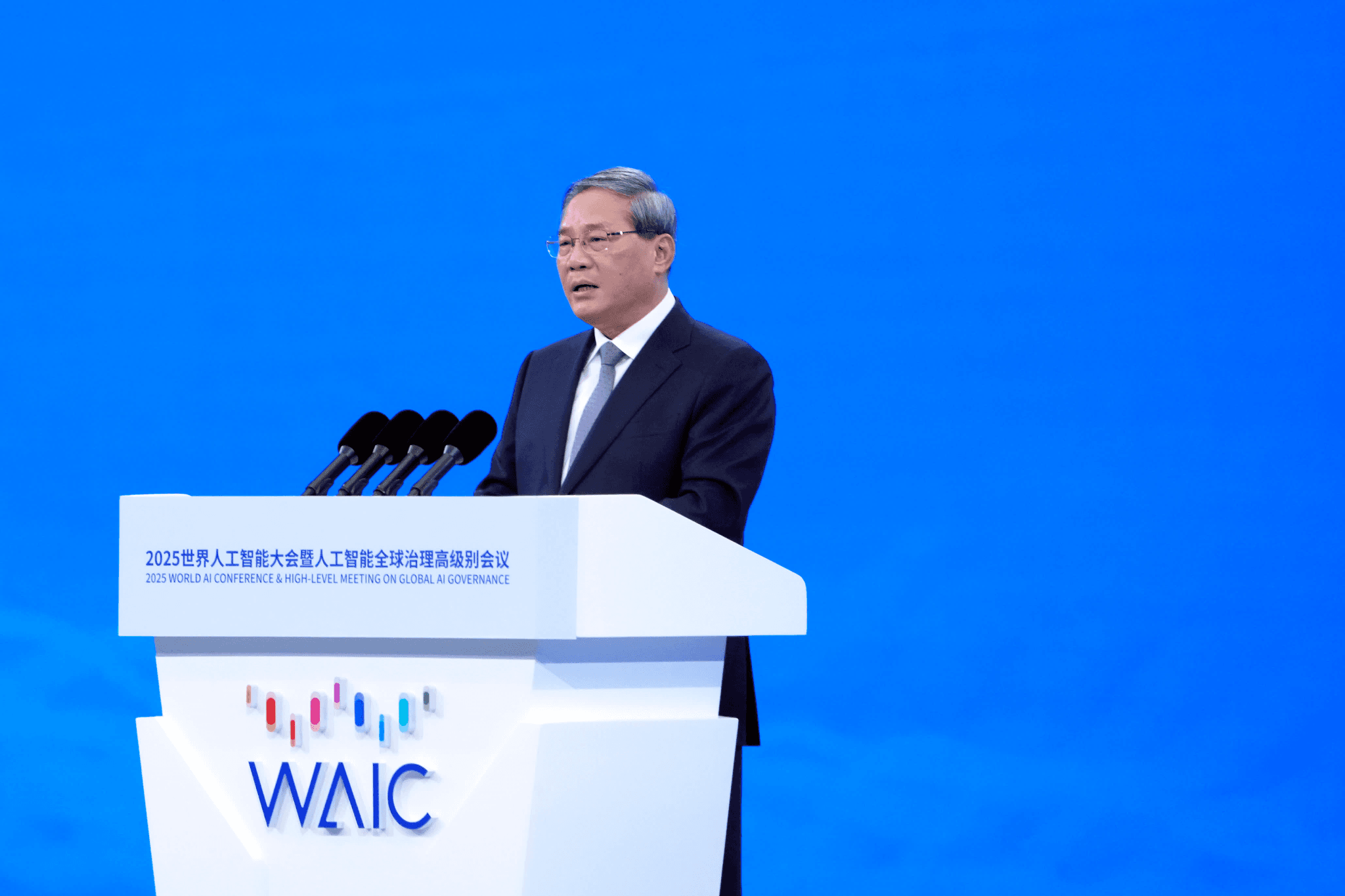
Premier Li Qiang spoke at the World Artificial Intelligence Conference in Shanghai on July 26, 2025. He announced China's plan to create a new international organization for AI cooperation. This group would have its headquarters in Shanghai.
The Chinese leader wants countries to work together on AI development. He believes AI should benefit everyone, not just a few powerful nations. Li said the current AI rules around the world are broken up and need better coordination.
Key points from China's announcement:
- Creating a global AI cooperation organization based in Shanghai
- Sharing AI technology with developing countries, especially in the Global South
- Building international rules for AI safety and development
- Making AI accessible to all nations, not just wealthy ones
Trump's Competing AI Strategy

Just days before China's announcement, President Trump revealed America's AI Action Plan on July 23, 2025. His plan focuses on making America the world leader in AI technology.
Trump's strategy has three main goals:
- Building more AI infrastructure like data centers across America
- Removing regulations that slow down AI development
- Exporting American AI technology to friendly countries
The American plan also aims to remove what Trump calls "woke" bias from AI systems used by the government. Trump wants to make sure AI models don't favor certain political views.
China's announcement came just three days after Trump's plan. This timing shows how both countries are racing to lead the AI world. While America focuses on keeping its technological advantage, China wants to create a global cooperation system and lead that cooperation, pushing aside America.
What China's AI Action Plan Actually Includes
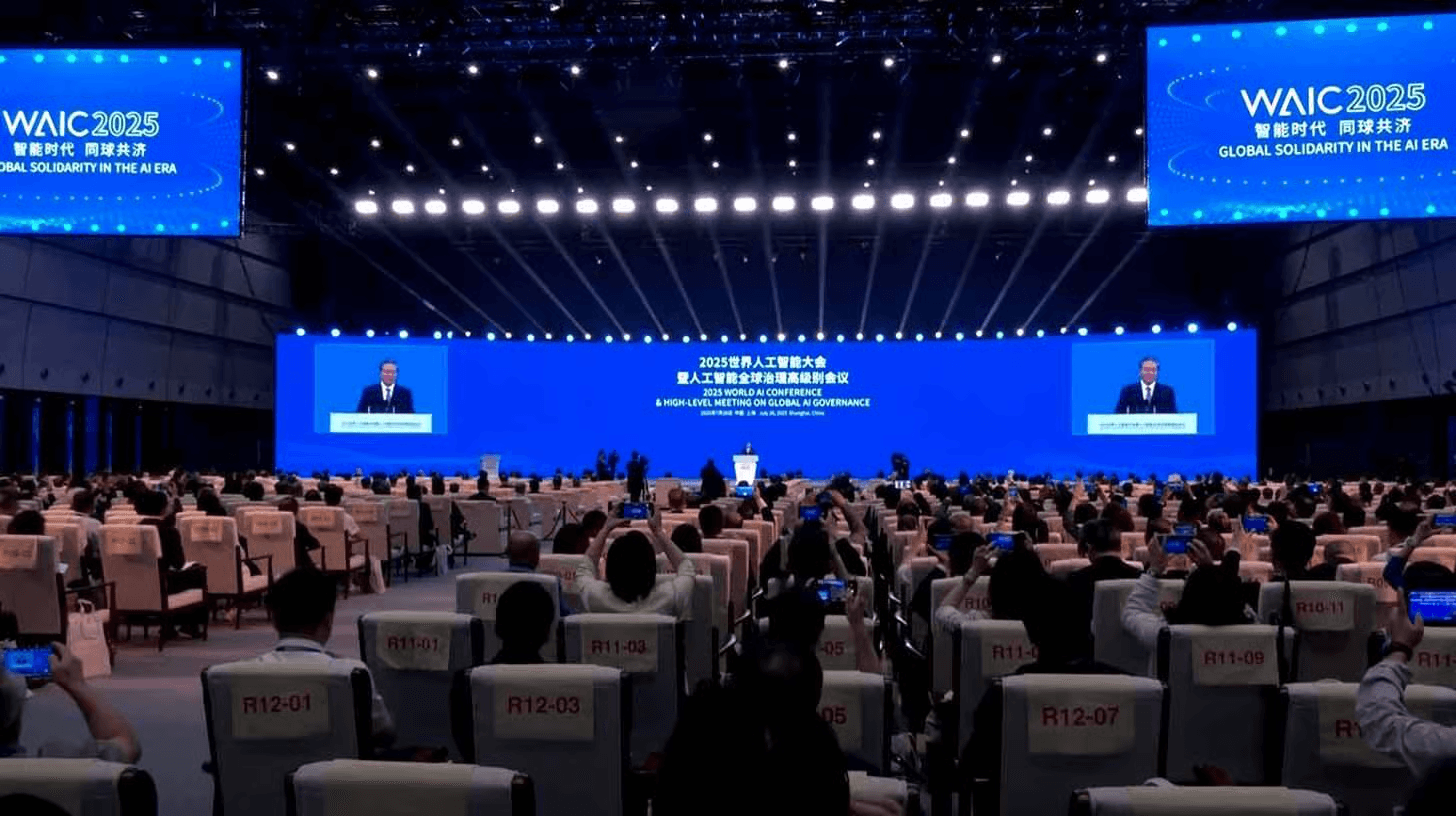
China's AI strategy goes beyond just creating new technology. The plan focuses on three main areas that show how different it is from America's approach.
The "AI Plus" Strategy
China wants to put AI technology into every part of its economy. This "AI Plus" plan means adding AI to factories, hospitals, government offices, and businesses across the country. The goal is to make AI a normal part of daily work and life.
The strategy includes:
- Using AI in manufacturing to make products faster and better
- Adding AI tools to healthcare systems for better patient care
- Putting AI into government services to help citizens
- Training workers to use AI in their jobs
Helping Developing Countries
China wants to share its AI technology with poorer countries around the world. This focus on the Global South is a key part of their plan. They believe AI should not be controlled by just wealthy nations.
China's support includes:
- Sharing AI software and tools with developing countries
- Training people from these countries to use AI
- Building AI infrastructure in partner nations
- Making AI technology affordable for smaller economies
While America builds partnerships mainly with rich, friendly countries, China takes a different path. China's multilateral approach means working with many different types of countries at once. They want to create a global system where everyone can participate, not just American allies.
The Investment Side: Opening Doors for Foreign Companies
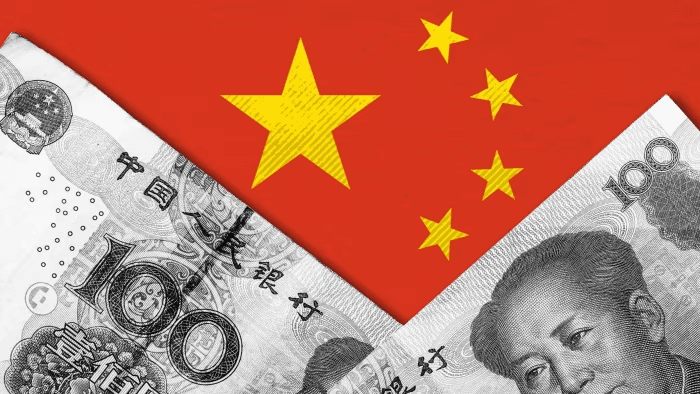
China is not just focusing on technology sharing. The country is also making big changes to attract foreign companies to invest in Chinese AI development. This new approach shows China wants outside help to build its AI future.
New 2025 Investment Plan
China released a detailed plan in 2025 to bring more international companies into the country. This plan specifically targets AI and technology companies that want to work in China. The government promises better treatment and fewer barriers for foreign businesses.
The investment plan offers:
- Faster approval processes for foreign AI companies
- Special support teams to help international businesses
- Clear rules that treat foreign and Chinese companies equally
- Financial help for companies that invest in Chinese AI projects
Opening Key Sectors
China is opening three important sectors that were previously difficult for foreign companies to enter. These changes make it much easier for international firms to work in China.
The newly opened sectors include:
- Telecommunications - Foreign companies can now provide internet and communication services
- Healthcare - International firms can build hospitals and offer medical AI solutions
- Education - Foreign companies can create AI-powered learning tools and educational services
China is removing many rules that made it hard for foreign companies to start operations. The government now allows foreign firms to get loans from Chinese banks and set up regional headquarters more easily.
These changes help international companies by providing better access to funding and simpler business registration processes.
Why US Chip Restrictions Haven't Worked as Expected

America thought it could slow down China's AI progress by cutting off access to advanced computer chips. Three years later, the results show this plan has not worked as well as expected.
Background on America's Chip Controls
The United States started major restrictions on semiconductor exports to China in October 2022. These rules were designed to stop China from getting the most advanced computer chips needed for AI development.
The restrictions targeted several key areas:
- Advanced AI chips - Blocking sales of powerful Nvidia processors like the A100 and H100
- Chip-making equipment - Stopping exports of machines needed to manufacture semiconductors
- Technical support - Preventing American engineers from helping Chinese chip companies
- Manufacturing tools - Restricting access to specialized equipment from Dutch company ASML
The Biden administration updated these rules in 2023 and 2024, making them even stricter. The goal was to keep China at least five to ten years behind in chip technology.
China's Surprising Success with Local Alternatives
Instead of falling behind, China has made impressive progress in developing its own chip technology. The restrictions actually pushed Chinese companies to work harder on creating domestic alternatives.
Key Chinese achievements include:
- Huawei's breakthrough - Released the Mate 60 Pro phone in 2023 with a 7-nanometer chip made by Chinese company SMIC
- DeepSeek's AI model - Built an advanced AI system for just $5.6 million, much cheaper than American alternatives
- Domestic chip production - Chinese companies are now making chips that were previously impossible without foreign technology
Even Nvidia CEO Calls Chinese Progress "Formidable"
Jensen Huang, the CEO of Nvidia, has been surprisingly honest about China's rapid advancement in AI technology. His comments show that even American chip leaders recognize China's success.
Recent statements from Huang include:
- "China is not behind" in artificial intelligence development
- Called Chinese company Huawei "one of the most formidable technology companies in the world"
- Praised Chinese AI models like DeepSeek, saying they are "world class"
- Admitted "China is right behind us" and "we are very close"
These comments from the head of America's most important AI chip company show that the export restrictions have not created the large technology gap that policymakers expected.
China Backs Up Strategy with New Breakthrough AI Model
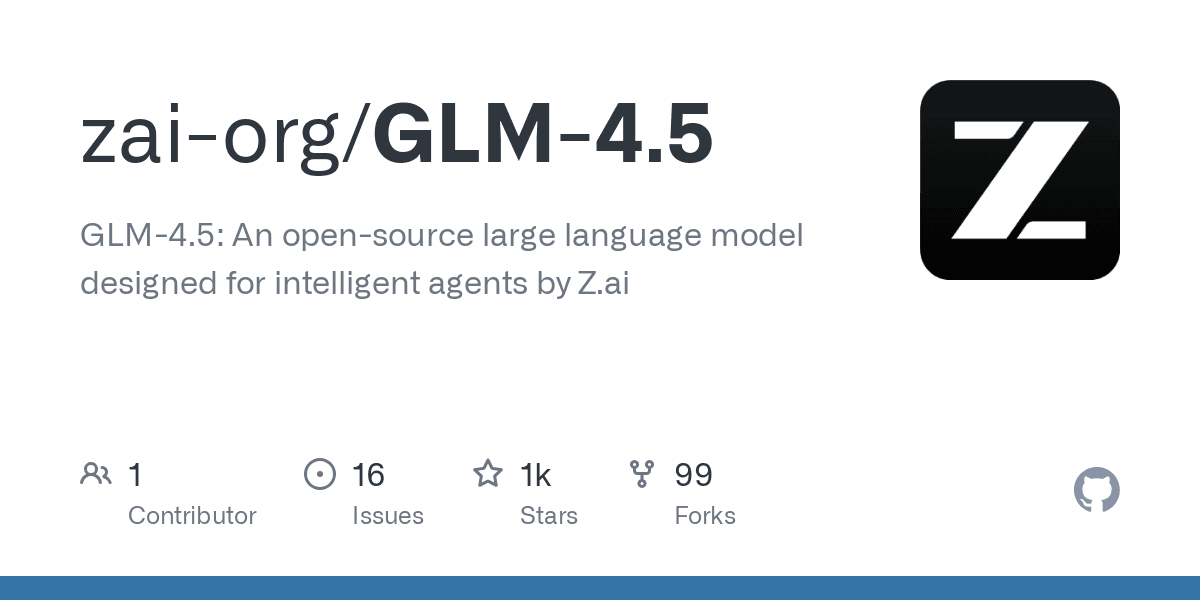
China is proving its AI strategy with real results. Just days after announcing its global cooperation plan, Chinese company Zhipu AI released GLM-4.5, a powerful new AI model that shows the country can truly compete with America's best technology.
GLM-4.5 ranks third globally in performance tests, competing directly with ChatGPT and Claude across multiple tasks including coding, reasoning, and complex problem-solving. The model demonstrates that China's AI capabilities are not just promises but actual working technology that matches international standards.
Real-World Capabilities That Matter
What makes GLM-4.5 impressive is its practical abilities that go beyond basic chat functions:
- Interactive applications - Can create games like Flappy Bird and complex web applications
- Full website development - Builds complete sites with both front-end design and back-end systems
- Business tools - Generates professional presentation slides and marketing materials
- Coding excellence - Achieves 90.6% accuracy in tool-calling tasks, outperforming many competitors
The system offers two working modes: a thinking mode for complex reasoning tasks that require careful analysis, and an instant mode for quick responses to simple questions. This flexibility makes it suitable for different types of users and applications.
The timing of this release, coming right after China's international AI cooperation announcement, sends a clear message that the country has the technical strength to back up its global AI leadership ambitions.
The Belt and Road Connection: China's AI Expansion Strategy
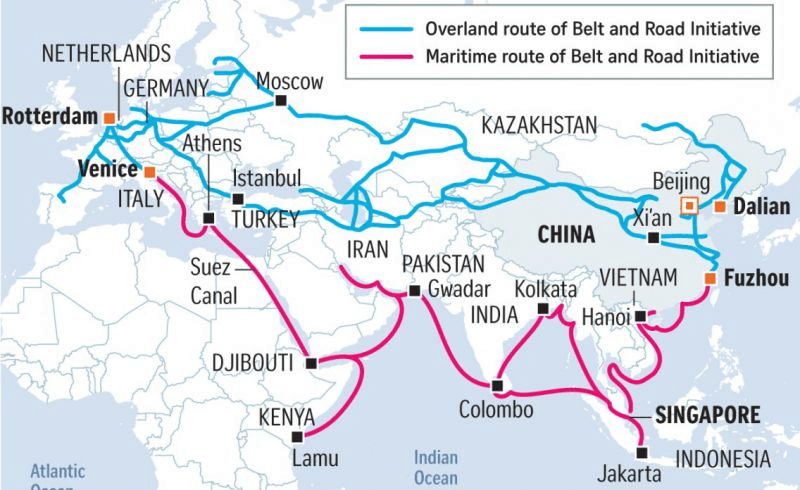
China is taking a smart approach to expand its AI influence worldwide. The country plans to use its existing Belt and Road Initiative partnerships to spread AI technology to developing nations that want alternatives to Western tech dominance.
The Belt and Road Initiative already connects China with over 140 countries through infrastructure projects, trade deals, and development programs. Now China wants to add AI cooperation to these existing relationships, making it easier for partner countries to access Chinese technology.
Strategic Focus on Underserved Markets
China is specifically targeting countries that have limited access to American and European AI systems:
- Developing economies - Nations in Africa, Southeast Asia, and Latin America seeking affordable AI solutions
- Non-aligned countries - States that prefer not to depend entirely on Western technology
- Resource-rich partners - Countries that can offer raw materials in exchange for AI infrastructure
- Strategic locations - Nations in important geographic positions for China's global influence
China presents AI technology as part of broader development assistance rather than standalone tech sales. This approach includes training local workers, building data centers, and creating AI research partnerships. The strategy helps China build long-term relationships while expanding its technological footprint in regions where American companies have less presence.
High-Profile Meetings Signal Serious Intent

The presence of major international tech leaders in Shanghai shows that China's AI push is being taken seriously around the world. When former Google CEO Eric Schmidt visited Shanghai before the conference, it sent a clear message about global interest in China's AI plans.
Schmidt met with Shanghai Party Secretary Chen Jining on Thursday, just days before the World Artificial Intelligence Conference began. This high-level meeting happened behind closed doors, suggesting serious business discussions about AI cooperation and investment opportunities.
Global AI Giants Show Up in Person
The conference attracted an impressive lineup of international tech leaders who traveled to Shanghai specifically for this event:
- Geoffrey Hinton - The "Godfather of AI" and 2024 Nobel Prize winner made his first-ever visit to China
- Eric Schmidt - Former Google CEO participated in key discussions about US-China AI cooperation
- Harry Shum - Former Microsoft Executive Vice President joined panel discussions
- Andrew Yao - Turing Award winner and respected computer scientist attended high-level meetings
These are not minor industry figures. These are the people who built the modern AI industry and continue to shape its future direction.
What Their Attendance Really Means
When tech leaders of this caliber make long international trips to attend a conference, it signals that they see real opportunities and threats. Hinton's presence was particularly significant since he rarely travels internationally anymore, yet he made the journey to Shanghai.
Schmidt's comments at the conference were especially telling. He called for US-China cooperation on AI governance, saying both countries "should collaborate on these issues" to maintain global stability. This suggests that even former American tech executives see value in working with China rather than completely cutting ties.
Conclusion
China has launched a comprehensive AI strategy to challenge American tech dominance through global cooperation rather than competition. At the Shanghai World AI Conference, Premier Li Qiang announced plans for a new international AI cooperation organization based in Shanghai, targeting developing countries that lack access to Western technology.
The strategy includes China's "AI Plus" plan to integrate AI across all industries domestically, while opening telecommunications, healthcare, and education sectors to foreign investment. This approach leverages existing Belt and Road partnerships with over 140 countries to spread Chinese AI technology globally.
Despite US chip restrictions since 2022, China has made surprising progress. Companies like Huawei developed advanced 7-nanometer chips, while Zhipu AI's GLM-4.5 model ranks third globally against ChatGPT and Claude. Even Nvidia CEO Jensen Huang admits China is "not behind" and calls Chinese progress "formidable."
The presence of international tech leaders like Geoffrey Hinton and Eric Schmidt at the Shanghai conference signals that global companies are taking China's AI ambitions seriously. China is positioning itself as an alternative to US-led AI development, offering inclusive cooperation versus America's alliance-focused approach.
